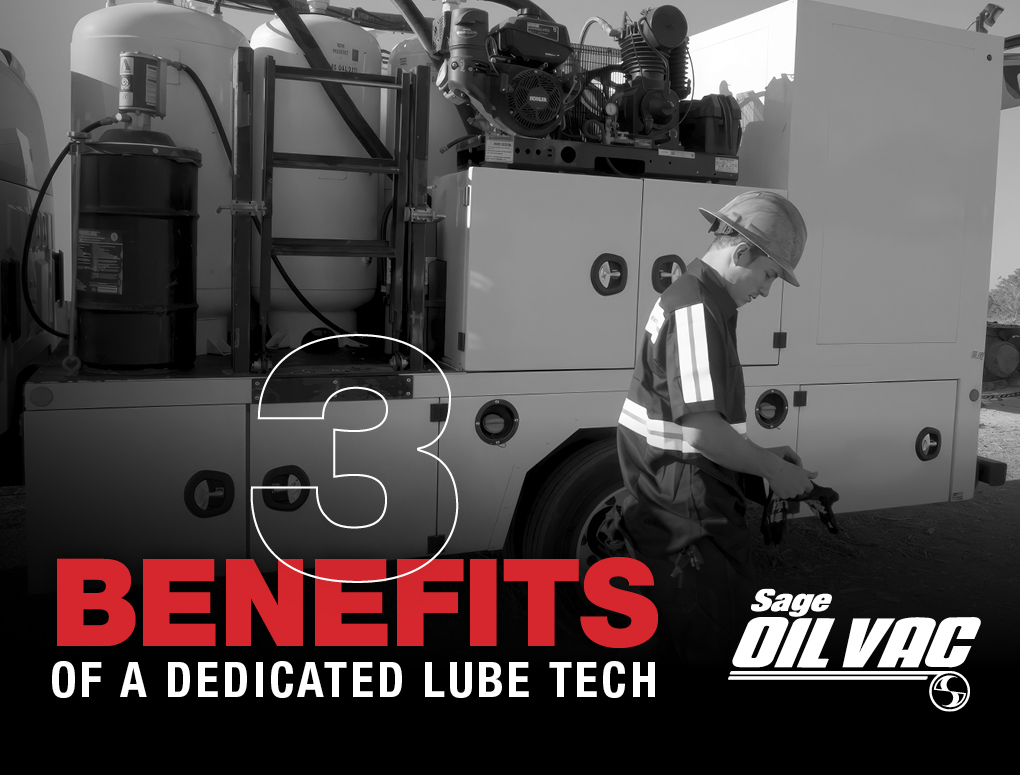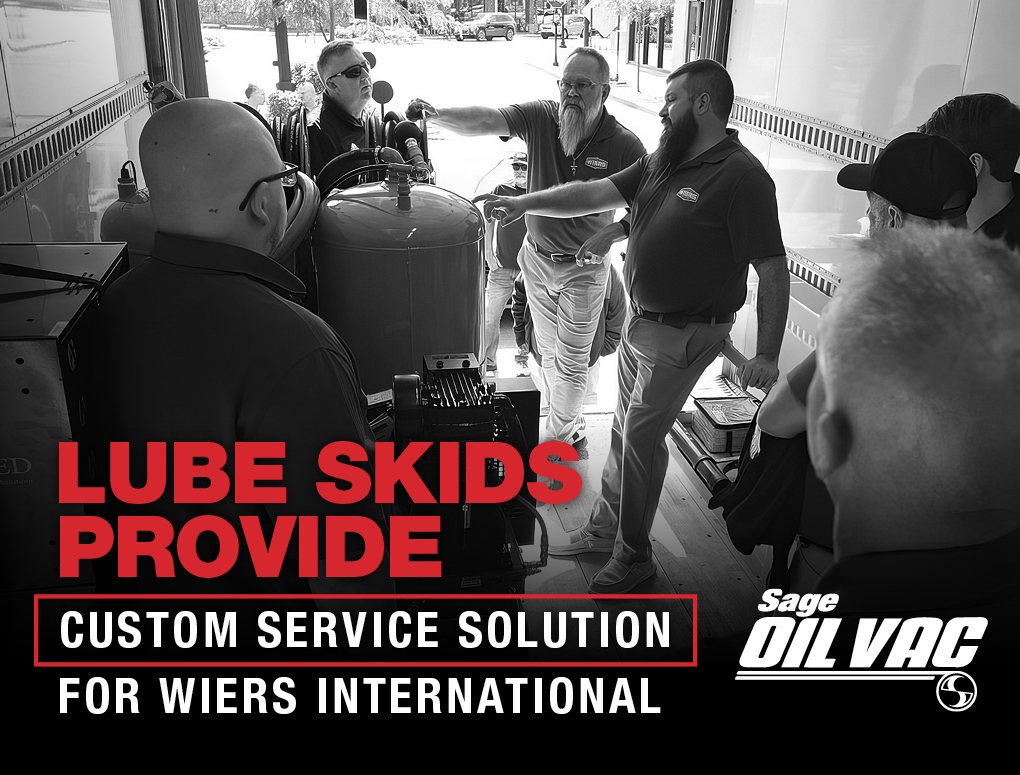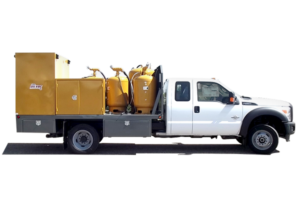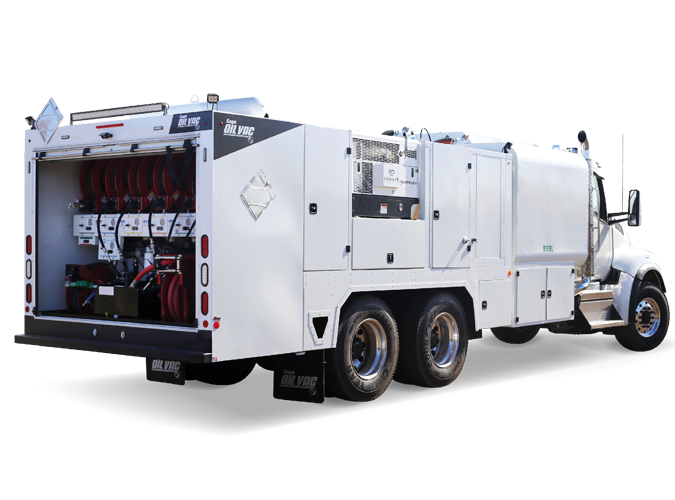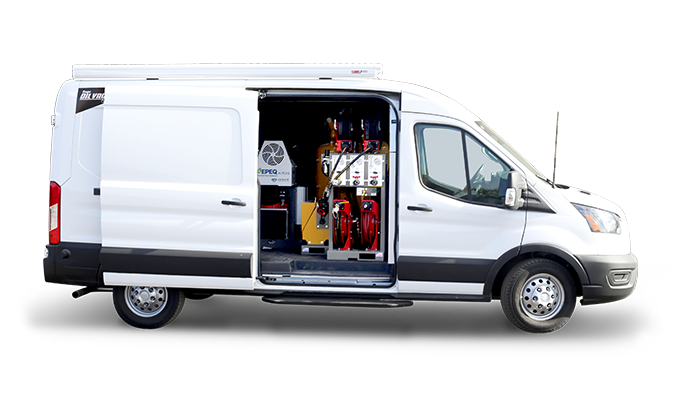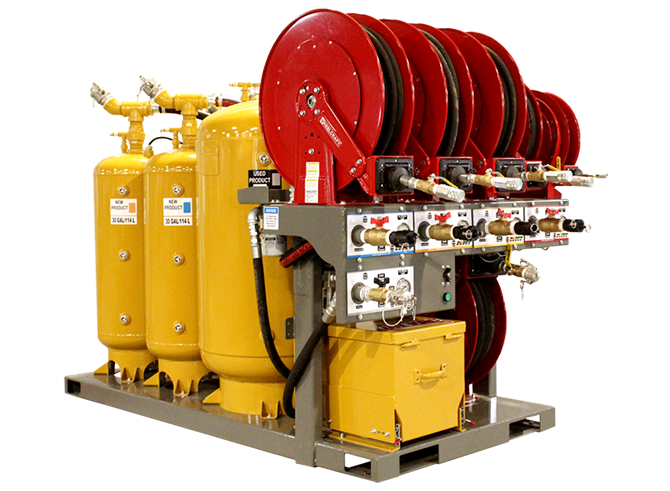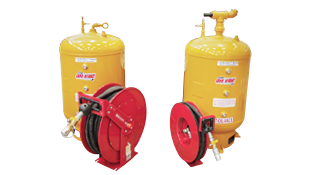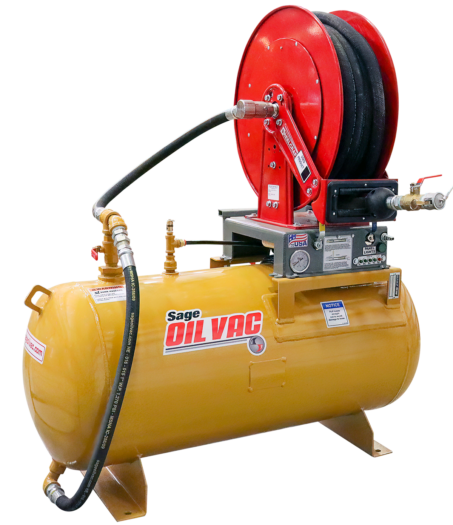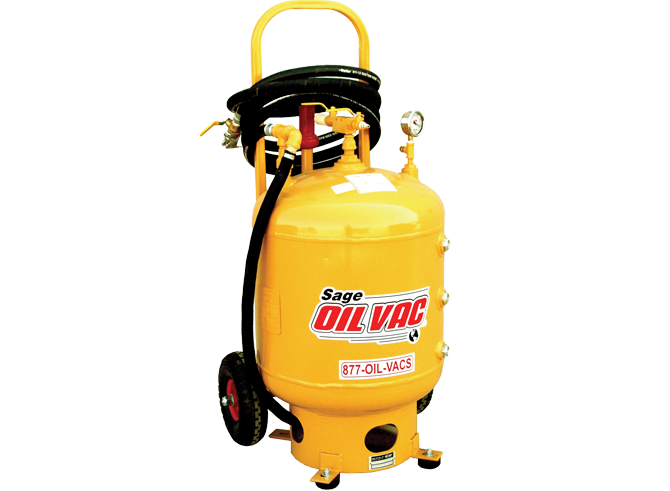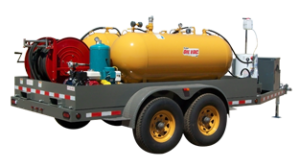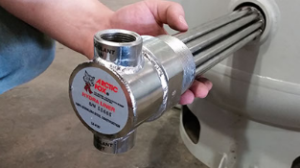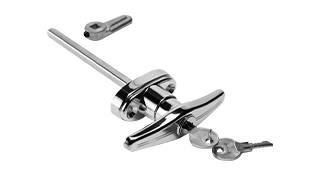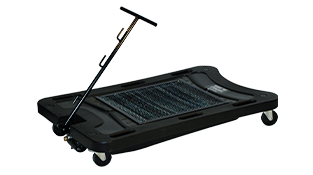Service Van or Mobile Lube Truck? Here’s How to Choose.
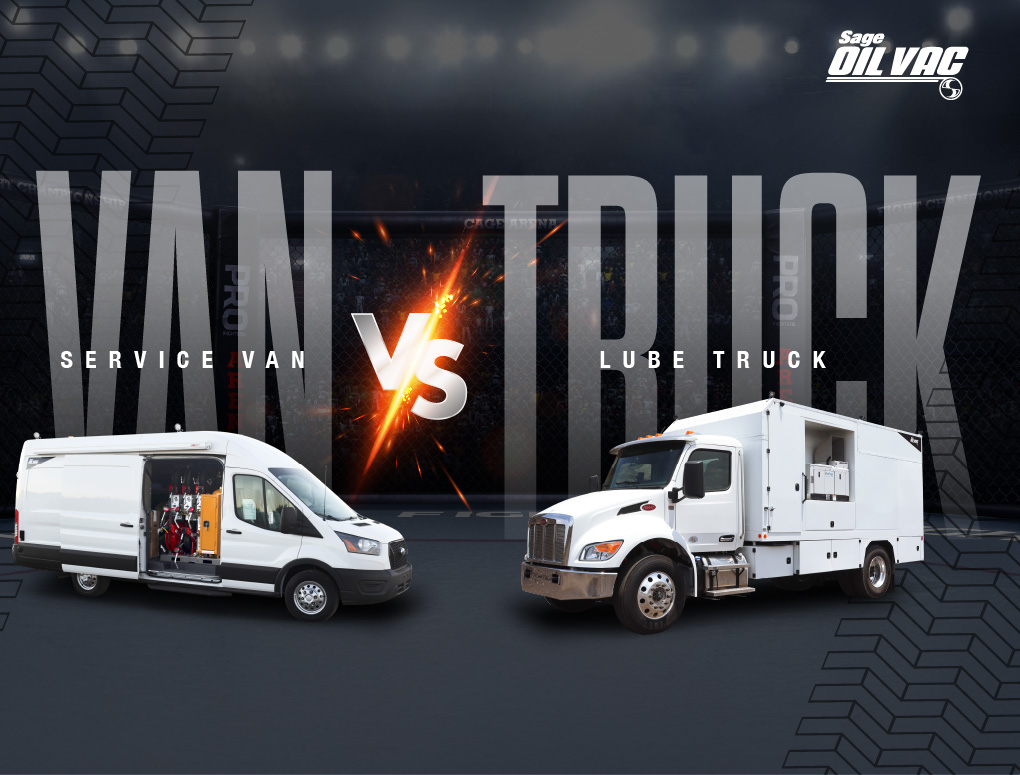
There’s no universal solution for businesses looking for a service van or mobile lube. That’s why Sage Oil Vac offers a complete line of service vehicles with customizable options. The right choice will help you streamline maintenance, optimize efficiency and boost lube technician satisfaction. So how do you decide which Sage Oil Vac solution meets the needs of your operation?
The answer requires balancing five key criteria:
- Driver availability
- Required payload capacity
- Ability to access jobsites
- Cost-efficiency
- Desired weather protection
We’ll walk through each factor to help narrow down what’s the best fit for what your operation is tackling.
How does technician availability influence service van or mobile lube truck choice?
Finding technicians with a CDL endorsement for Class 7 and 8 trucks can often be a challenge for some operations. Let’s face it, CDL drivers necessary to operate trucks over 26,000 pounds (11,793 kg) GVWR are in high demand and short supply. Sage Oil Vac has stepped to the plate by offering non-CDL trucks and service vans.
Non-CDL popularity continues to surge in response. Smaller Class 5/6 trucks and vans can be operated without a CDL, widening the available labor pool. In addition, crews not hauling fuel or diesel exhaust fluid (DEF) often find smaller vehicles a better fit. When comparing trucks vs. vans, non-CDL trucks tend to offer higher capacities and off-road capabilities than vans (more of that to follow). Conversely, while vans have smaller fluid capacities, they are more maneuverable in congested areas and urban environments where every inch matters.
“More contractors, dealers and rental companies are choosing non-CDL lube trucks due to the cost and efficiency benefits, where we’re seeing more interest in vans from fleet maintenance companies,” said Chance Castillo, chief sales and marketing officer for Sage Oil Vac.
However, for operations servicing sizable equipment fleets with large oil volume demands, there is no efficiency substitute for having a technician with a CDL. It’s important for operations to weigh available capacity against the time it would take to travel to and from the shop multiple times. Larger mobile lube trucks are unbeatable in terms of fluid volume.
How much payload and storage capacity do you need in a fuel and lube truck?
Whether a lube truck or van is a better fit will depend on the number and the size of machines in your fleet. Too small and you risk falling behind on your scheduled preventive maintenance (PM). Too large and you’re overinvesting in unused capacity.
“Finding the right fit is all about balance. You need to meet your needs today and consider any planned growth to ensure your investment will also meet future needs. This includes whether a lube van or a fuel and lube truck is the best option,” said Castillo.
Start by calculating how many machines you’ll service daily and reference OEM fluid change intervals and refill volumes. This will tell you how much fresh and used oil your vehicle needs to carry without having to make multiple trips back to the shop. Then determine if you need to carry additional fluids — such as fuel, coolant or DEF.
Payload is tied to the vehicle’s GVWR. This determines the number and the size of the product tanks. Sage Oil Vac offers lube (and fuel) solutions across a range of classes with several customizable options:
- Lube vans: Take on light-duty service work with capacity for up to 90 gallons (340.7 L) of new oil, 60 gallons (227.13 L) of used oil and 30 gallons (113.56 L) of coolant.
- Non-CDL lube trucks: Choose greater capacity with less restrictive licensing, including up to 420 gallons (1,589.87 L) of fresh oil, 220 gallons (832.79 L) of used oil, 60 gallons of new coolant (227.13 L) and 60 gallons (227.13 L) of used coolant.
- Class 7 fuel and lube trucks: Carry 1,000 gallons (3,785.41 L) of diesel, 300 gallons (1,135.62 L) of new oil, 120 gallons (454.25 L) of used oil, 60 gallons of new coolant (227.13 L) and 60 gallons (227.13 L) of DEF.
- Class 8 fuel and lube trucks: Meet the most demanding fleet PM demands with up to 2,000 gallons (7,570.82 L) of diesel, 440 gallons (1,665.58 L) of new oil, 180 gallons (681.37 L) of used oil, 80 gallons of fresh coolant (302.83 L) and 80 gallons (302.83 L) of DEF.
Consider mobility and terrain access in your decision
Remember, payload is only part of the equation. Your PM solution must be able to get to the equipment. For tight, urban worksites or fleet yards, Sage Oil Vac mobile lube vans enhance maneuverability. They’re great for navigating narrow passages, low-clearance bridges and congested lots and parking garages. However, the mobile lube van may face limitations on rough terrain due to lower ground clearance and stress placed on the vehicle frames.
Non-CDL mobile lube trucks offer enhanced mobility while providing more ground clearance and robust frames to tackle demanding jobsites.
“Our non-CDL trucks are equipped with four-wheel drive to handle off-road conditions better than larger tandem-axle trucks. The single-axle design provides improved traction and agility on uneven terrain, often outperforming larger units in rugged environments,” said Castillo. “That said, customers with our service lube vans talk about the ease of those trickier urban environments and situations like generator maintenance in parking garages.”
If your technicians travel across variable terrain or between scattered sites, a smaller, nimble non-CDL truck may be your most productive choice. However, on jobsites with suitable access and ground conditions, larger lube trucks offer increased capacity to service larger fleets. Class 8 trucks have earned a reputation as the go-to solution on many large earth-moving and mining sites. If you need a more maneuverable alternative in these fluid-intensive applications, the Class 7 truck is a viable option.
Balancing lube vehicle cost and capacity
While carrying more fluids is often an advantage, bigger doesn’t always mean better — or more cost-effective. Smaller non-CDL lube trucks and vans often deliver better fuel economy and a lower total cost of ownership, especially when fluid demands can’t justify a Class 7 or 8 truck. In addition, vehicle size doesn’t mean you have to compromise on features.
Mobile service vans and non-CDL trucks are particularly cost-effective for light equipment fleets. Their smaller engines burn less fuel, and their initial investment is lower than larger truck platforms. If you don’t need high-volume capacity, these compact setups help reduce overhead while delivering on performance.
If you’re maintaining larger fleets, Class 7 trucks often strike a balance between capacity, maneuverability and fuel efficiency. This makes them a popular option for larger fleets.
For many larger fleets that service big machinery, there is no substitute for the Class 8 lube truck. The efficiency gained by having all the fluids available more than offsets the higher purchase and operating costs.
Protecting lube technicians from the elements
Technician comfort and productivity can take a hit in harsh weather or dusty environments. In cold climates, oil viscosity increases, slowing down fluid transfer and making open-air maintenance harder.
“Sage Oil Vac enclosed lube bodies, like our new non-CDL enclosed lube truck and service lube vans, help maintain oil flow and protect technicians from the elements, reducing fatigue and increasing efficiency,” explained Castillo.
Mobile lube vans provide enclosed, all-in-one-style workspaces where all fluid exchange components are accessible from the side door. This allows technicians to perform PMs without being exposed to extreme conditions. An enclosed service van or lube truck also provides an ideal space for branding with large, smooth side surfaces.
In applications where exposure to the elements is less of an issue, open lube trucks offer weight advantages and easier access to components.
Why Sage Oil Vac systems outperform expectations
Regardless of vehicle size or configuration, every Sage Oil Vac lube system uses exclusive pump-free vacuum technology. This system transfers fluids faster and cleaner than conventional methods — using compressed air to move fluids into and out of sealed tanks.
Here’s how Sage Oil Vac systems raise the bar:
- Faster fluid exchange:
- Fill fresh oil tanks at up to 15 GPM.
- Dispense products at 5 GPM.
- Vacuum hot oil at up to 8 GPM.
- Safer operations with sealed tanks that minimize fumes and prevent spills.
- Cleaner exchanges that reduce contamination of fresh fluids.
- More reliable performance with fewer moving parts, rounded tank corners and bottom-drain designs to prevent sludge buildup.
The best Sage Oil Vac lube vehicle for your operation depends on site conditions, technician availability, fleet size and budget. If the user needs serious capacity for demanding jobs, there are fuel and lube truck options. If CDL requirements are a concern, explore non-CDL mobile lube trucks and vans. Our product comparison tool and dedicated Sage Oil Vac sales team can help you find the perfect fit.

